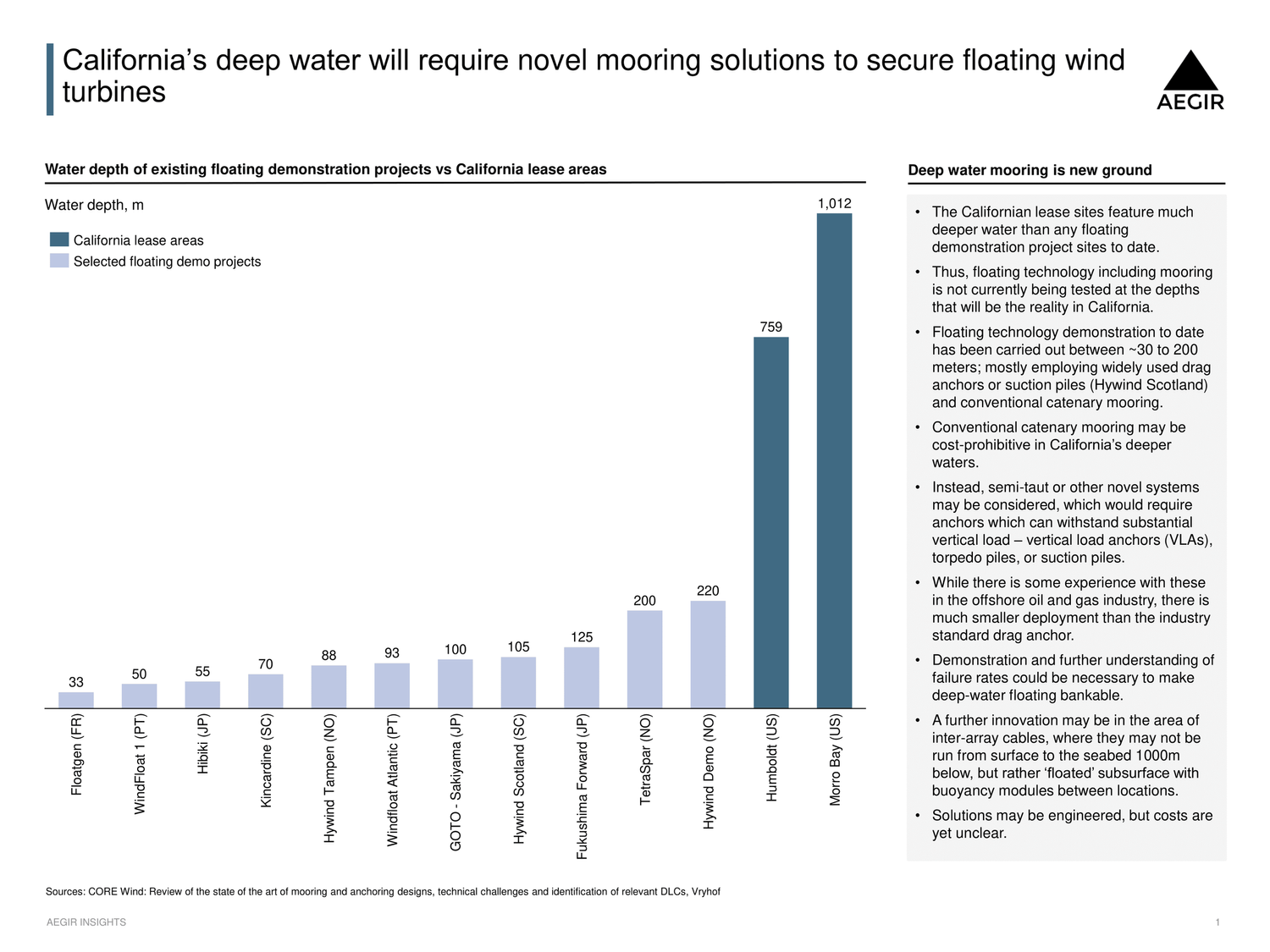California has great opportunities for offshore wind, but they come with great challenges. One being water so deep, it requires new mooring solutions.
BOEM takes a step closer to the planned California leasing round in September 2022 with todays’ conclusion of the comment period for the Humboldt Wind Energy Area’s draft Environmental Assessment. This keeps California on the track to become one of the earliest purely floating wind markets globally.
The state needs 10 GW offshore wind to achieve its targets of 100% renewable energy and zero-carbon electricity by 2045, according to a 2021-report by California’s Energy Commission – indicating great opportunities for offshore wind developers.
California will be a market for deep floating wind concepts
However, the deep Pacific waters in the Californian offshore wind areas far surpass the depth of any site so far used for demonstration of floating wind projects. Floating wind turbines have only been installed in waters up to around 200 meters, while the Humboldt and Morro Bay designated Wind Energy Areas have average depths of 750-1000 meters.
What will this mean for development of offshore wind in California? Several new technical solutions will likely be necessary for floating turbines to be deployed in California, including mooring systems and anchors designed for extra long mooring lines and high vertical loads.
The offshore wind sector of today has very little experience with such solutions, but lessons may be learned from the offshore oil and gas sector and could help establish California as a global hub for deep-water floating wind know-how.
Waves, ports and grid will also be challenges for offshore wind in California
As part of our #BigFloat intelligence series about floating wind, Aegir Insights recently evaluated the four biggest challenges for floating wind build-out in California:
- Depth,
- waves,
- ports
- and grid connection.
To learn more about our assessment of these challenges for offshore wind in California, reach out and ask about The Big Float.
